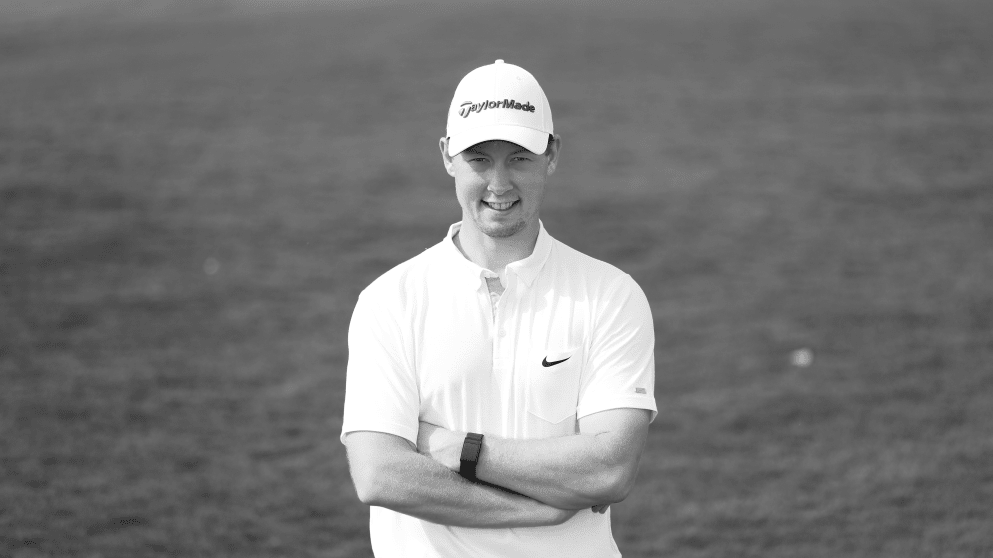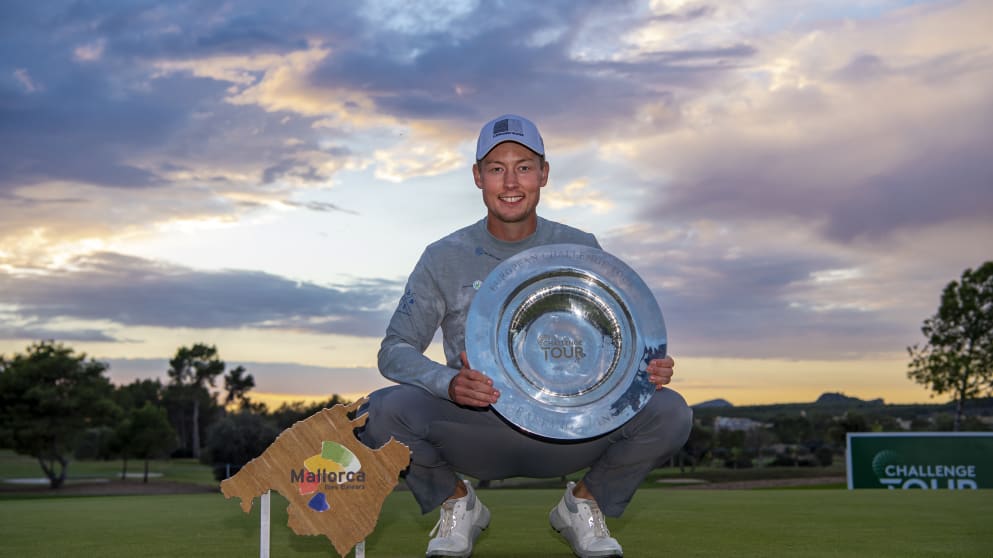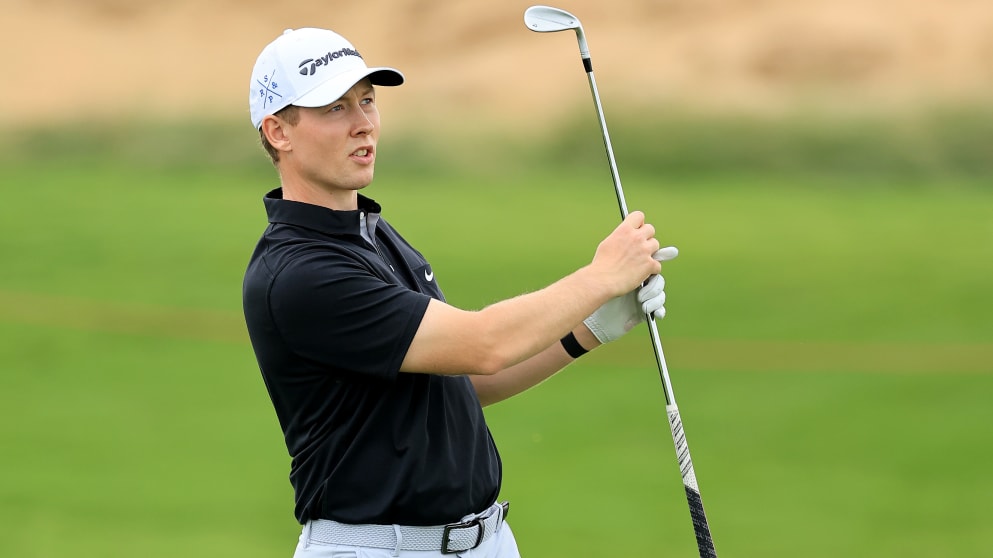In this week’s player blog presented by Enterprise Rent-A-Car, Marcus Helligkilde talks about his route to the DP World Tour, the importance of staying positive, and why he takes a statistical approach to his golf game

I’m someone who tries to put joy in life before golf, and I think that positive attitude is what helped me win the Challenge Tour last year and earn my first season on the DP World Tour. It’s a mentality I’ve worked hard to achieve, and it involves a lot of work off the course, but it’s one that actually helps me enjoy golf. Even right now, when I’ve been playing terribly, I know the more positive I am now, the better I’ll do when I come out the other side.
The first year I had on the Challenge Tour in 2019 helped me learn that. If I hadn’t experienced it, I think my mentality and how I do things here in 2022 on the DP World Tour would have been different. When I first turned pro, I played on the Nordic League, and it was comfortable. We were in cars, not far from home, and I saw my coach every week. The Challenge Tour isn’t like that. You have to travel a lot, you’re far away from your comfort zone, you’re playing against very good players, and you aren’t playing for that much money. At the time I started searching for things, constantly trying to fix something or try new things over and over again. None of that worked, and it was an important lesson for me to learn. Despite bad results, it was a really good year for me, because it showed me what not to do. I realised instead that sticking to a process and keeping it simple, even though my mind isn’t very simple, was the best thing for my game.
I started really considering what was best for my game, and what would help me stay patient, but also healthy and happy. Since then, I’ve approached the game differently, and have really tried hard to study the game of golf from the statistical side. Without that 2019 season I may not have done it like this, and it’s because of that I’m pretty certain I’m going to succeed in some way.

It's not a mentality that I’ve always had. When I first started really playing golf, I was awful: throwing the clubs, saying terrible words. My grandad – who is the most positive person in the entire world – was about to quit playing golf with me because I was so negative all the time. But he was also one of the reasons my attitude changed.
My grandad is someone who has had a big influence on me, and if I can become half as good a person as he is, I know I’ll be fine. He’s so positive, so hard-working, and such a good person towards everyone, that he really taught me how to be – as a person and on the course. He’s the one who got me into golf when I was six. I’d play in the back yard of my grandparent’s farm. Then, once I could play, he and I would play 18 holes and only stop for an ice cream or a hot dog and play 18 more. Those were some of the best times of my life, just playing golf for fun and nothing else.
I think my family in general have really taught me to be positive, but also to prioritise my health over my results. They have been incredibly supportive of me, and my golf, but they’ve also let me do this journey on my own, and when they call it’s never to find out how I’ve played, it’s to ask how I am. Sometimes they don’t even know where I am.
They definitely taught me to be positive, but on the golf side of things I also had a great mental coach both at the Danish National Team and in my coach Andreas Kali. Andreas has always tried to get better all around, as a coach and a human being, so he’s learnt a lot about mental stuff and how that can affect life and golf, and he’s passed that on to me. I’d call it a very positive attitude, but also a very stoic attitude, and that’s where the statistical side of things comes in.

The way I approach golf now compared to 2019 is different to a lot of other professionals out here, and it helps me not only have that positive attitude but a stoic mental attitude to everything I do. What I try to do is to be so statistical and deliberate with everything I do in the lead up to every round, that when I go onto the course there are no emotions or feelings behind every shot, because I know exactly what the statistics say I should do.
You may not believe this based on what I’ve just said but I’m a very untidy kind of guy, and that’s why I do this – to keep my mind in a better place. If you said to me to go to the short game area without a plan, you would see me hit flop shots with four-irons or all kind of bunker shots trying to hit them with as much spin as possible. That’s how I am as a person, I’m very creative, and that’s what I was like in 2019. I was trying to create new stuff every day, but what I learnt through that year was that sometimes it’s about showing up and doing the same things over and over again. That discipline of repetition is what makes you better, and more consistent. That’s what I’m doing now, because that’s where I feel like I can gain an advantage over everyone, and I love the process of striving to get better.
When I’m planning my practice I’ll plan exactly how many golf shots with technical focus I’m going to hit. It might be 10/10 shots with technical focus or it might be functional practice with certain clubs. But it could also be the number of drivers off the deck, or how many wedges I’m going to hit, and it will also include what time I’m going to the gym and how many reps and what exercises exactly I’m doing. I need to plan the day. And if I don’t plan the day, I’m not going to do anything. I want to be the best I can be, as a person and as a golfer, and I can’t be that if I don’t plan my way around.
Then when it comes to the course, combined with learning a lot from people like Mark Brodie and Scott Fawcett, I’ve done a lot of my own testing with my dispersions and statistics. For example, if I was approaching the first hole at Al Hamra, I’d consider the four shots I have with my driver – the hard driver from the high tee, the high tee standard, low tee standard and then I have the chip driver. I know how far they carry and I know how far the dispersion is, and then I go on Google Earth and look at the course and look at the longest carry, and work back from there to see what will give me the most room. If I have 15m of help with the wind, then I can hit the high-tee standard driver, and then I’m going to aim at the centre of the centre bunker because then I know I have 30m each side between penalty strokes or disaster.
I’ll take all of that information and put it in my stroke saver, and it helps me feel completely relaxed on the course – because I know statistically speaking the best target to hit it to or think about. We can calculate how far it is to that target, and from there I’ve done my work on the range, I know my dispersions and how tight and wide they are, and I try to come up with the best answer. Together with my caddie and good friend Morton, who helps calculate the distance and targets, I know that if I hit as good a shot as I can on that exact line, that’s the perfect target for my golf game.
For the record, I’m not a guy without emotions and feelings. If anything I’m the 100% opposite, which is why I try and do this. Approaching the game in this way takes away the emotional decision making and stops feelings getting to me, which allows me to be relaxed, happy and the best version of myself on the course – which helps when you have a four-footer on the last to win a tournament.
It also helps me be really objective out there. You’re obviously going to hit some wayward shots – about 1 out of 10 will be out with your dispersion, so if I play 16 holes and I see my dispersion with one driver is bigger than normal, then I would probably reflect and change tactic to a club like the low tee standard driver because the dispersion is lower. I’m always reflecting on the game and staying on top of what I have and what I do not have. It’s not emotional, it’s just making sure I reflect on what’s going on, and then adjust if I need to. For example, if my intended target is 5m left of where my centre of dispersion is, then I’ll move my target more left. I’m just trying to take the human emotion out of it and try to stay very objective.
I really enjoy trying to become better and that everyday process of pushing myself. That’s where I find my love and my fun in some way in the game, and I want to see how I can practice better than the other guys and be better than the other guys.
And of course I’d love to play out here on the DP World Tour for many years, win out here and play in the final event of the year, but that’s only part of it. I need to keep doing my stuff, and my main goals this season are just to stay mentally healthy and physically healthy, treat myself and others well, and stick to my to my process. And as long as I’m happy, and my family and friends are happy, everything will be fine.





